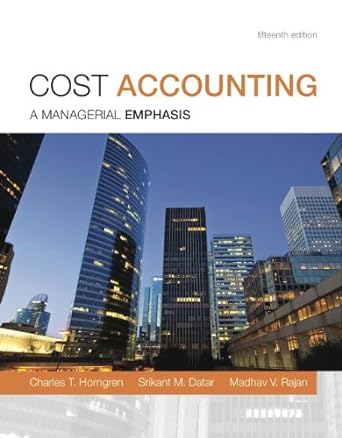Answered step by step
Verified Expert Solution
Question
1 Approved Answer
Hyrkas Corporation's most recent balance sheet and income statement appear below: Balance Sheet December 31, Year 2 and Year 1 (in thousands of dollars) Assets
Hyrkas Corporation's most recent balance sheet and income statement appear below: Balance Sheet December 31, Year 2 and Year 1 (in thousands of dollars) Assets Current assets: Cash Accounts receivable, net Inventory Prepaid expenses Total current assets Plant and equipment, net Total assets Liabilities and Stockholders' Equity Current liabilities: Accounts payable Accrued liabilities Notes payable, short term Total current liabilities Bonds payable Total liabilities Stockholders' equity: Common stock, $2 par value Additional paid-in capital Retained earnings Total stockholders' equity Total liabilities & stockholders' equity Income Statement For the Year Ended December 31. Year 2 Year 2 Year 1 $ 165 $ 220 250 270 220 190 20 20 655 700 850 860 $1,505 $1,560 $ 190 $ 220 50 50 40 40 280 310 180 210 460 520 200 200 330 330 515 510 1,045 1,040 $1,505 $1,560 Income Statement For the Year Ended December 31, Year 2 (in thousands of dollars) Sales (all on account) Cost of goods sold Gross margin Selling and administrative expense Net operating income Interest expense Net income before taxes Income taxes (308) Net income $1,230 760 470 365 105 20 85 26 $ 59 Dividends on common stock during Year 2 totaled $54 thousand. The market price of common stock at the end of Year 2 was $13.30 per share. Required: Compute the following for Year 2: a. Gross margin percentage. (Round your answer to 1 decimal place.) b. Earnings per share. (Round your answer to 2 decimal places.) c. Price-earnings ratio. (Do not round intermediate calculations. Round your answer to 1 decimal place.) d. Dividend payout ratio. (Do not round intermediate calculations. Round your "Percentage" answer to 1 decimal place.) e. Dividend yield ratio. (Round your "Percentage" answer to 2 decimal places.) f. Return on total assets. (Do not round intermediate calculations. Round your "Percentage" answer to 2 decimal places.) g. Return on equity. (Round your "Percentage" answer to 2 decimal places.) h. Book value per share. (Round your answer to 2 decimal places.). 1. Working capital. (Input your answer in thousands of dollars.) j. Current ratio. (Round your answer to 2 decimal places.) k. Acid-test (quick) ratio. (Round your answer to 2 decimal places.) 1. Accounts receivable turnover. (Round your answer to 2 decimal places.) m. Average collection period. (Use 365 days in a year. Do not round intermediate calculations. Round your answer to 1 decimal Saved m. Average collection period. (Use 365 days in a year. Do not round intermediate calculations. Round your answer to 1 decimal place.) n. Inventory turnover. (Round your answer to 2 decimal places.) o. Average sale period. (Use 365 days in a year. Do not round intermediate calculations. Round your answer to 1 decimal place.) p. Times interest earned ratio. (Round your answer to 2 decimal places.) q. Debt-to-equity ratio. (Round your answer to 2 decimal places.) a. Gross margin percentage b. Earnings per share c. Price-earnings ratio d. Dividend payout ratio e. Dividend yield ratio f. Return on total assets g. Return on equity h. Book value per share Working capital Current ratio k Acid-test ratio I. Accounts receivable turnover. m. Average collection period n. Inventory turnover 38.2 % 0.59 5.1 79.2 % % % % days o. Average sale period days p. Times interest earned ratio q. Debt-to-equity ratio
Step by Step Solution
There are 3 Steps involved in it
Step: 1

Get Instant Access to Expert-Tailored Solutions
See step-by-step solutions with expert insights and AI powered tools for academic success
Step: 2

Step: 3

Ace Your Homework with AI
Get the answers you need in no time with our AI-driven, step-by-step assistance
Get Started


